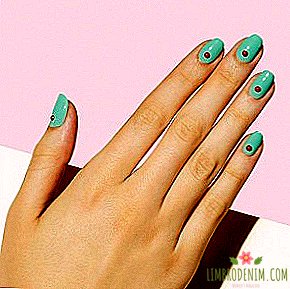Antihipe: Why unfashionable - the most fashionable
Here's a photo of a guy in stretched sweatpants., a washed-up T-shirt and ragged uggs. In another picture - he is wearing a torn T-shirt with a savory stain on his chest and shoes that have seen life. The next frame, and this same guy poses all in the same sweatpants tucked into socks, a stupid T-shirt and sneakers, which may well be his peers. No, this is not some newspaper article about the life of a New York homeless person, but an instagram account shiasoutfits, which Urban Outfitters creative director Bobby Wigham brought in April of this year and which has already managed to recruit sixteen thousand subscribers.
Bobby documents every public entry of Shayi Labaaf, and his focus, as you might guess from the title, is eccentric images of the actor: a set of turquoise hoodie and bright purple leggings, a T-shirt with the inscription "Fuck Twilight" and other equally impressive bows. According to Bobby, among the followers of shiasoutfits are not only Labaf’s fans, but also prominent fashion industry figures: from stylist David Weindwall, who worked with Elle and WSJ Magazine, to Grailed brand director of the online platform Lawrence Schlossmann. Such an agiotage around an actor, caused not only by his public appearances, can be understood: often the guy whose choice of clothes before leaving the house seems to take no longer than thirty seconds looks much more stylish and inspires more than anything Street-style reports combined (hello to fashion weeks), not to mention photo chronicles of social events. The question arises - why?
Since fashion has finally turned into a part of pop culture, it has become part of it, sorry for the tautology, fashionable. Fashion has become part of the mainstream, to which any student can touch. The degree of involvement can be very different: from direct work in the fashion industry to putting your bows on instagram in order to collect as many likes as possible. It is unlikely that anyone can be reproached for wanting to get their fifteen seconds of glory, but behind all these deliberate attempts to look fashionable and translate all trends at once, the main thing that should form an individuality is lost - his own vision, not clouded by the trend dictates dictate. Erasing the boundaries of the private and the general is also part of modern pop culture, and against this background, loud characters with unique taste stand out especially.
Fashion is moving more confidently towards absolute democratization and maximum coverage of the audience. Just look at today's teenagers: in 2008, twelve-year-old Tavi Gevinson became a sensation as the youngest fashion blogger, but now young dandies with a blue eye say that they "got carried away with fashion even before it became mainstream - two or three years ago" .
The more the funnel is twisted from the trendsetters and their imitators, the more people know who Alessandro Michele is, the more valuable are those who are not interested in fashion at all
The catch is that often the freedom of expression, which laid out the path to the glory of the same Gevinson and other people who are called clichés “style icon”, is increasingly replaced by the necessity of supposedly “right” choice: sneakers are necessarily from the most expected drop of the season, ankle boots - Balenciaga-like socks, overseas - with a vetements or Yeezy combed streetwear. Following certain visual codes, it is much easier to be involved in the fashionable caste. It feels like being in the opposite camp, which purposely ignores trends and avoids everything that the HYIP is spinning around, is at least not cool, but at the most shameful: if you are not in the subject, why is the Supreme logo sweatshirt now standing like talk to you about. But the paradox is that the more tightly the funnel of trendsetters and their imitators are twisted, the more people know who Alessandro Michele is, and he begins to dream of wearing fur slippers, the more valuable those who are not interested in fashion at all seem.
Eight years ago, authenticity, which was always lacking in the fashion industry, was searched on the streets, blogs and street style, but thanks to the popularization of fashion, the boundaries between individuality and mainstream almost ceased to exist. Swedish bloggers began to broadcast their own vision of the beautiful through the prism of minimalism - two years later the color scheme “white-gray-black” and laconic design in the best traditions of COS could be found on every second.
Gucci showed their first collections a la vintage romanticism - everyone suddenly began to wear pleated skirts and drop glasses without diopters. Demna Gvasalia came out onto the main stage with his oversized raincoats and giant hoodies - how it all ended, we are well aware. The fact that every self-respecting mass market produces things marked “HYIP” is not bad: after all, this is their task as fashion clothing manufacturers. The fact that people want to feel involved in a big pop cultural phenomenon called fashion is also quite understandable - in the 1990s, say, the similar role of the broadcaster of the whole class was given to MTV. But in an effort to look as trendy as possible, the most important thing is often lost - personality. The beauty of self-expression through clothing lies in the fact that you can tell the world about yourself without saying a word, but if your voice is lost among thousands more, what is the advantage?
The only way to look fashionable today is to not try to look fashionable. The paradox is that even the very denial of trends is already a trend.
Against the background of universal insanity in the fashion, anti-hap in the performance of Labafa and others like him is like a sip of water, because for the most part they look like they do not care about appearance. This is honesty, not covered with a glossy shell - as in raw instagram-storis, which are often more interesting to watch than polished face photos in a ribbon.
For the past few years, the Olsen sisters were an example of such an "I don't give a fuck" image: their everyday bows, in the spirit of "putting on the first thing they picked up from the floor," look much more alive than the carefully styled social outlets (although they also look much more lively the rest). Perhaps the whole point is that we are finally tired of the same type of verified images and our eye needs something more clinging, something imperfect, annoying habitual sense of beauty and therefore giving impetus. It was precisely this that caused the popularity of the “ugly” fashion and nostalgic images of Gosha Rubchinsky and Demny Gvasalia - the irony, however, is that later they themselves became mainstream.
As a result, the only way to look fashionable today is to not try to look fashionable. The paradox is that even the very negation of trends is already a trend. It remains only to wait until it becomes more massive and runs out of itself. At least, the creative team of Balenciaga, obviously, has already subscribed to shiasoutfits - just look at the latest men's collection of the brand to find the points of intersection.
Cover: Getty images





